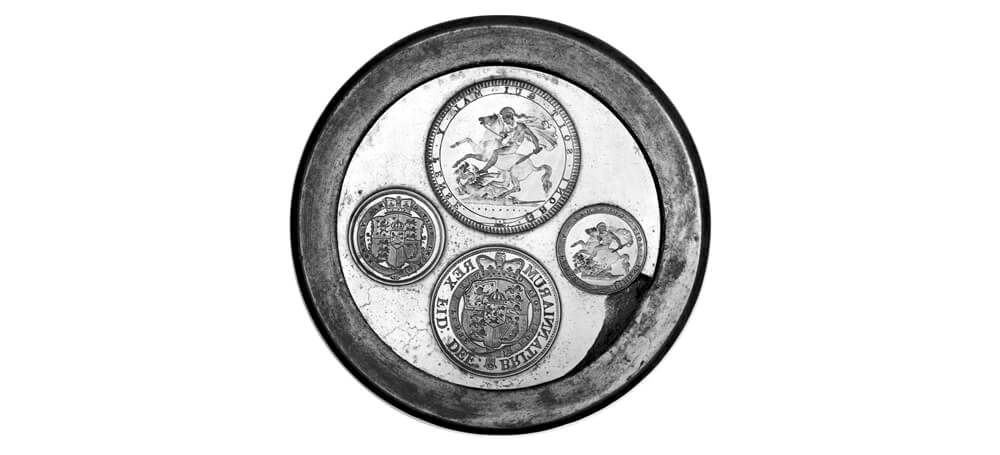Ricardo ingot dies
The large die illustrated here defied explanation for many years and were it not for a chance discovery of letters in the Birmingham City Archives they may well have remained a mystery. From correspondence during 1819 between the George Rennie, Superintendent of Machinery at the Mint, and Matthew Robinson Boulton, it has been possible to establish that the dies were intended for use in preparing 60oz gold ingots.

They would have formed part of a plan, devised by the famous economist David Ricardo, whereby bullion in relatively large amounts would have taken the place of a circulating coinage of gold. Technical difficulties led to the ingots being made in an altogether more conventional form and all that seems to have remained of the original idea to produce three-inch diameter ingots stamped on both sides with multiple impressions are these two tools from the Mint collection. Rather than the frivolous sports of engravers or engineers, we now know the dies to be important artefacts in the story of Britain's move towards an operational gold standard.
